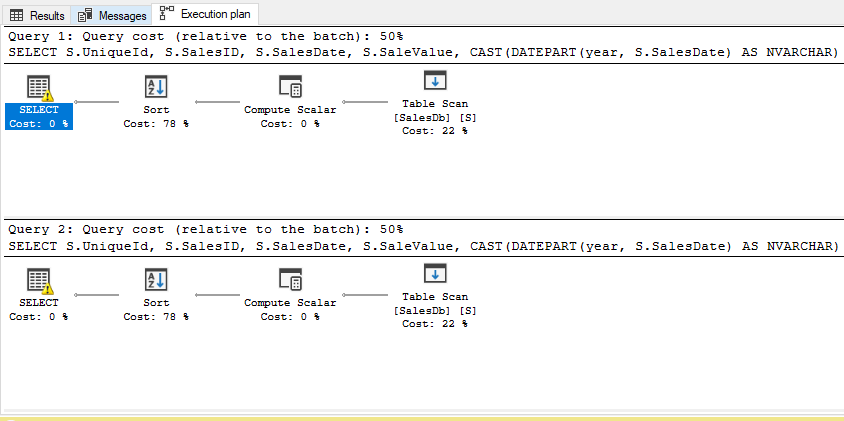TIL: You can use column aliases in an ORDER BY clause
This is almost certainly something a lot of other people know, but I've somehow managed to not learn it in the many (many!) years of using SQL Server that I have under my belt...
You can use the alias of a column / calculated value in the ORDER BY of your query, i.e. you don't have to repeat the "meat" of the column definition
To put it another way, the following queries are identical - as can be seen from the execution plans I screen-grabbed:
SELECT S.UniqueId, S.SalesID, S.SalesDate, S.SaleValue, CAST(DATEPART(year, S.SalesDate) AS NVARCHAR) + '/' + FORMAT(DATEPART(month, S.SalesDate), '00') [SaleMonth] FROM [dbo].[SalesDb] S ORDER BY CAST(DATEPART(year, S.SalesDate) AS NVARCHAR) + '/' + FORMAT(DATEPART(month, S.SalesDate), '00') SELECT S.UniqueId, S.SalesID, S.SalesDate, S.SaleValue, CAST(DATEPART(year, S.SalesDate) AS NVARCHAR) + '/' + FORMAT(DATEPART(month, S.SalesDate), '00') [SaleMonth] FROM [dbo].[SalesDb] S ORDER BY [SaleMonth]
The very obvious advantage of this is that in the second query there's not a large glob of SQL repeated which avoids the opportunity for error in copying it across and also the opportunity for the two to become out of synch, along with all the subtle issues that can introduce.
Now to re-visit some queries and strip some duplicated code out of them!
